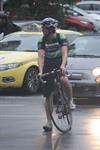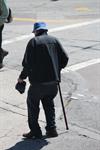
A Fit Heart and Fit lungs are critical to a person's overall health, wellbeing and longevity.
Cardiovascular disease has become a serious problem in modern society.
Gain an insight and understanding of how your cardiovascular and respiratory systems work together to oxygenate cells and remove carbon dioxide from your body. Understand how the systems are regulated in both resting and active states and learn how different conditions can affect your cardiorespiratory performance. An ideal course for anyone with an introductory knowledge of human biology who is keen to expand their understand of these vital body systems.
COURSE STRUCTURE
There are 7 lessons as follows:
1. The Science of Blood
-
The Functions of Blood
-
Components of Blood
-
Blood Typing
-
Blood Cells
- Hematopoiesis; Erythropoiesis, Leukopoiesis, Lymphopoiesis
-
Blood Cell function; Erythrocytes, Neutrophils, Eosinophils, Basophils, Thrombocytes etc
- The Immune Response
- Haemostasis
- Clotting Mechanism
- Haemodynamics
- Circulatory Networks
- Blood Testing
- Full Blood Count
- Cross Matching
- Blood Cultures
- Arterial Blood Gas
- Biochemical and Metabolic Tests
- INR
- Blood Disorders; Red & White Blood disorders, Blood Clotting, Poisoning
- Lymphatic System
2. Blood Pressure
-
Factors Affecting Blood Pressure; cardiac output, peripheral resistance, blood volume
-
How Blood Pressure is Measured
-
The Cardiac Cycle
-
Heart Muscle Cell Contraction
- Electrical Control of the Heart Muscle Cells; Sinoatrial Node (SA Node), Atrioventricular Node (AV Node), Bundle of His (Atrioventricular bundle), Purkinje Fibres
- Blood Pressure Problems
-
Systolic hypertension, Diastolic hypertension and Hypertension
-
Distribution of Blood Flow
-
Regulating Heart Rate and Blood Pressure
-
Sensors
- Problems with Heart Rate; variations, and other conditions including Myocardial infarction and Cardiac Tamponade
- Electrocardiograms and their Interpretation
3. Pulmonary Ventilation
-
The Respiratory System
-
Respiratory Epithelium
-
The Lungs
-
Lung Anatomy
-
Alveoli
-
Airway Anatomy
- Nasal and oral cavities
- Pharynx
- Epiglottis
- Larynx
- Trachea
- Bronchi and bronchioles
-
Physiology of Breathing; Equilibrium, Pressure, Inspiration, Expiration
-
Physiological Measures of Lung Capacity and Function; Total Lung Capacity, Tidal Volume, Vital Capacity, Forced Vital Capacity, IRV, ERV, Functional Residual Capacity, MV, VO2 Max, etc
-
Effect of Exercise on Pulmonary Ventilation
4. Gas Exchange & Transport
-
Gas Exchange in the Human Body
-
External Respiration
-
Oxygen Transport
-
Internal Respiration
-
Hemoglobin
-
Carbon Dioxide Transport
-
Biochemistry of Gas Exchange; Boyle’s Law, Charles’ Law, Dalton’s Law, Henry’s Law, etc
-
Factors Affecting Gas Exchange; Partial pressure Gradients, Gas Solubility, Membrane thickness, etc
-
Compliance
-
Respiratory Control
5. Blood Flow & Gas Transport
-
Blood Flow; Volume, Target
-
Gas Transport
-
Arterial-Alveolar Gradient
-
Oxygen Transport
-
Factors Effecting Oxygen Release by Hemoglobin
-
The Bohr-Haldane Effect
-
Cellular Respiration
-
Energy Production; anaerobic and aerobic
-
Blood Flow During Exercise and Rest
6. Cardio Respiratory Control
-
Cardio Respiratory Control and the Nervous System
-
Input Sensors
-
The CV Centre
-
High Brain Centres
-
Baroreceptors and Chemoreceptors
-
The Respiratory Centre
-
Starling’s Law
-
Capillaries
-
The Control of Heart and Lungs During Exercise
7. Cardio Respiratory Disease
-
Cardiac Diseases and Injuries
-
Chronic Heart Failure
-
Congestive Heart Failure
-
Myocardial Infarction and Ischemia
-
Cardiovascular Diseases
- Coronary Heart Disease
- Atherosclerosis
- Aneurysm
- Vasculitis
- Venous thrombosis
- Varicose veins
-
Causes of Cardiovascular Disease; lifestyle, diet, obesity, genetics, smoking, hypertension, etc
-
Respiratory Disease
-
Asthma
-
Chronic Obstructive Pulmonary Disease
- Emphysema
- Cystic Fibrosis (CF)
-
Effects of Cardio Pulmonary Disease
Each lesson culminates in an assignment which is submitted to the school, marked by the school's tutors and returned to you with any relevant suggestions, comments, and if necessary, extra reading. During the course students will have practical tasks to perform in their own home, allowing you to experience and investigate the concepts taught in the lessons.

What Can Happen if You Don't Maintain Cardio Respiratory Fitness?
There are many problems that can arise as a result of poor cardio respiratory health.
Cardiovascular disease is not one specific disease, but rather an umbrella term encompassing any disease affecting any part of the cardiovascular system; the heart (cardio-) or the blood vessels (vascular).
Within this group there are several specific diseases, some of which are outlined below:
Cardiac Diseases and Injuries
These are conditions that affect or occur in the heart muscle.
Chronic heart failure
May also be known as chronic heart disease, or most correctly as cardiomyopathy (cardio =heart, myo = muscle, pathy = disease). This is a disease that affects the heart muscle (myocardium). The muscle becomes increasingly weaker over time and this results in a reduced ability of the heart to pump blood throughout the body. It may affect the left or right side of the heart, or both sides (biventricular cardiomyopathy) and can be caused by a range of different things, including infection, high blood pressure, smoking, obesity and sedentary lifestyle. It may also appear without any apparent cause (idiopathic).
Congestive heart failure
May also be known as congestive heart disease or congestive cardiomyopathy. This is a condition where the weakening of the heart muscles has resulted in the ventricles in the heart become stretched, making the cavity bigger than normal. This makes it hard for the heart to contract forcefully enough to pump the blood. For example, if you have a small squeeze bottle full of sauce, even a gentle squeeze can cause a gush of sauce to come out. However, if you have a large squeeze bottle with only a little sauce a gentle squeeze will do nothing to get the sauce out. This is what happens in congestive heart failure. The pooling of blood in the enlarged heart can result in clots forming, which can be very dangerous when they are pumped out into the blood vessels.
Myocardial Infarction and Ischemia
Ischaemia is a condition where a section of organ tissue has died due to lack of oxygen. In the heart it can occur during a heart attack (myocardial infarction) when a clot in one of the blood vessels that supply oxygen to the myocardium is blocked by a clot. If the clot does not clear very quickly, all the muscle tissue that is fed by the affected blood vessel will die. There is no mechanism to repair this damage. How much it impacts the heart function depends on how many cells died and where they were located in the heart.
Cardiovascular Diseases
Diseases of the blood vessels which may in turn affect the heart.
Coronary Heart Disease
This is a chronic condition that is the main form of cardiovascular disease. Here the blood vessels that transport blood (and oxygen) to the cells that make up the heart muscle become narrowed or clogged by atherosclerosis (described below). If a vessel or vessels become partially blocked it can cause pain (angina) and injury to cells as they are not receiving enough nutrients and oxygen. If the plaque grows large enough to block the vessel the result is a heart attack and ischaemia.
Atherosclerosis
This condition may occur in the arteries serving the heart muscle, or in any artery transporting blood throughout the body. Basically, this is due to the gradual build up of fatty deposits on the walls of the vessels. Over time this causes an inflammatory reaction which hardens the vessel walls and leaves them swollen. More and more accumulation of fat and other substances forms a plaque. Plaques take up space in the blood vessel, limiting the flow of blood through it. Where blood flow is significantly slowed, or completely blocked tissues that are being fed by that blood vessel will begin to die from oxygen starvation.
Aneurysm
An aneurism is a bulge in an artery or vein caused by the stretching and deformation of the wall of the vessel, often due to chronic hypertension. They occur most commonly in the arteries, where blood pressure is highest. The bulge is a weak spot in the vessel and over time they tend to worsen. Eventually they can rupture, allowing blood to flow out of the vessel and into surrounding tissues. This is particularly catastrophic and often fatal if the aneurysm is in the aorta or in an artery serving the brain. A brain aneurysm that ruptures can result in a stroke. A stroke occurs when blood flow to the brain is interrupted, which may occur due to an embolism (blocking of the vessel by, for example, a thrombus. Alternatively, it can occur when an aneurysm bursts, which not only starves the brain tissue the artery supplies, but also creates abnormal pressure on the brain tissue as the blood leaves the vessel.
Vasculitis
Vasculitis: This is an inflammation of the blood vessels. It usually involves the arteries (arteritis) but may also affect veins (phlebitis) and capillaries. The inflammation may damage the wall of the artery or vein and impair blood flow to the region of your body supplied by that vessel. Sometimes vasculitis occurs along with a generalized disorder, such as lupus or rheumatoid arthritis, but it may also occur on its own. It is generally an autoimmune disease, that is, it is caused by an overreaction of the immune system which damages the blood vessel walls. There are many different types of vasculitis.
Varicose veins
This is a condition in which your veins become twisted and enlarged. The veins are usually located on the backs of your calves or on the inside of your legs, from the groin to the ankle. When valves in your veins don't function properly, blood can accumulate in your legs, causing the veins to bulge and twist. It is most common in the elderly, and also in people who spend a lot of time standing still.
Enrol in this course and learn more.